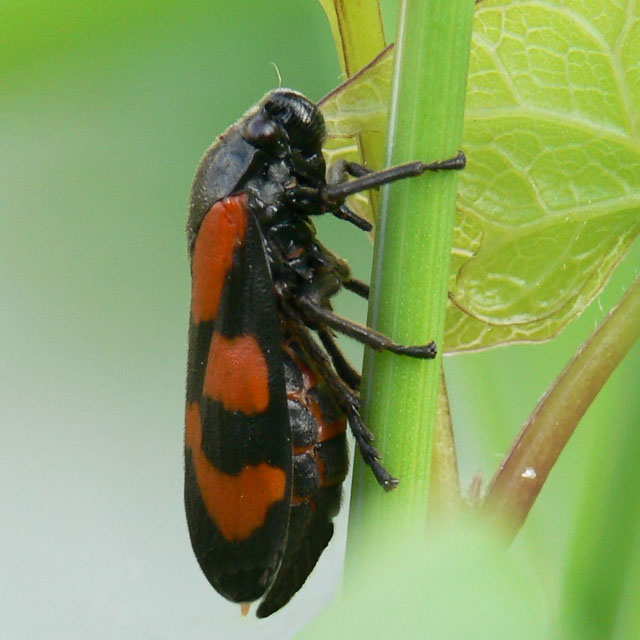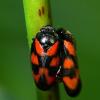Cercopidae

The Cercopidae are a large family of Hemipteran bugs, commonly known as froghoppers or spittlebugs. These insects are found worldwide, with many species living in Europe and the UK. They get their common name from the froglike shape and jumping ability of the adults, which can leap many times their own body length.
Froghoppers are small, stout-bodied insects, usually 5–10 mm long, and are often brown, green, or patterned with colourful markings. They have strong hind legs designed for jumping and piercing-sucking mouthparts used to feed on plant sap.
The nymphs (young stages) are best known for producing frothy masses of “cuckoo spit”, which appear on plant stems and leaves in spring and early summer. This foam protects the developing insect from predators, parasites, and drying out. Inside the foam, the nymph quietly feeds on plant sap until it matures into an adult.
Adult froghoppers are often seen on grasses, shrubs, and wildflowers during summer. Most species feed on a wide range of plants and cause little harm, though some can be agricultural pests in warmer regions.
In the UK, the most familiar species is the Common Froghopper (Philaenus spumarius), which comes in a range of colour forms from light brown to almost black. It is widespread and easily recognised by the cuckoo spit its nymphs produce on garden plants and hedgerows.
Froghoppers are an important part of grassland and meadow ecosystems, serving as food for birds, spiders, and other predatory insects.

